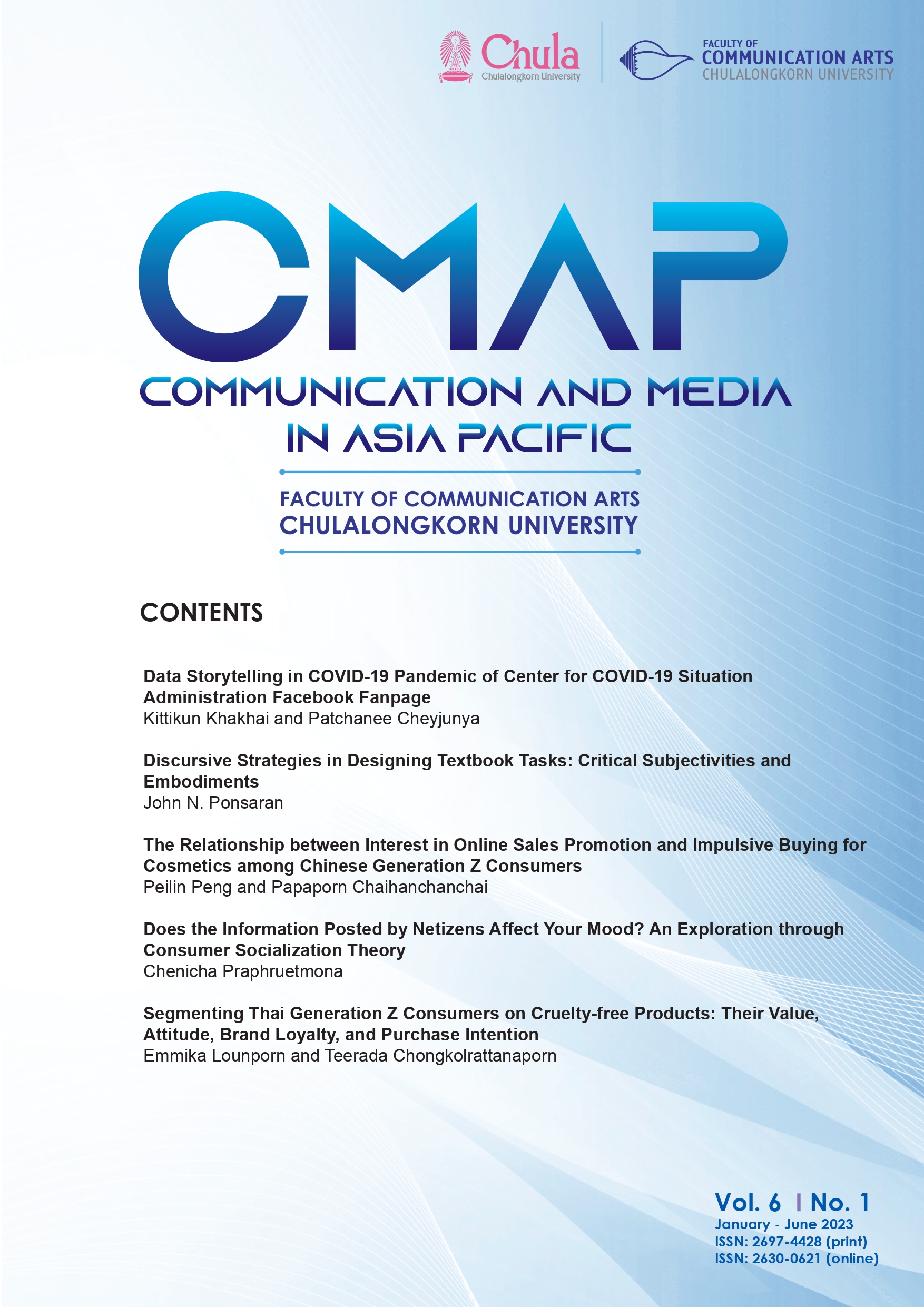Discursive Strategies in Designing Textbook Tasks: Critical Subjectivities and Embodiments
Main Article Content
Abstract
This qualitative media education inquiry sought to critically identify and analyze the discursive strategies employed by textbook authors in conceptualizing and designing tasks in media literacy education. Using critical discourse analysis, the discursive strategies were examined based on how they contribute to the framing and setting of a media pedagogy that is contextual, creative, and critical. Among the discursive strategies that surfaced from the coded, thematized, and analyzed data include: 1) divergent and dialogic questioning, 2) binary opposition, 3) dialectical positioning, 4) collocation of ‘social’ as a form of contextualization, 5) omission and exclusion, 6) double legitimization, 7) popular in form and social in rendering, and 8) instantiation of alternative media. From the critical examination of the discursive strategies, exemplars were commended and some proposals were also forwarded.
Article Details
References
Al Maghlouth, S. H. (2017). A critical discourse analysis of social change in women-related posts on Saudi English-language blogs posted between 2009 and 2012 [Doctor Dissertation]. Lancaster, UK: Lancaster University.
Alagaran II, J. R. (2019). Media and information literacy: Empowering the discerning audiences. Quezon City, The Philippines: Abiva Publishing House.
Anderson-Bakken, E., Jegstad, K. M., & Bakken, J. (2020). Textbook tasks in the Norwegian school subject natural sciences: What views of science do they mediate? International Journal of Science Education, 42(8), 1320-1338.
Apple, M. W. (1990). The text and cultural politics. The Journal of Educational Thought, 24(3A), 17-33.
Branston, G., & Stafford, R. (2010). The media student's book. Milton Park, UK: Routledge.
Bonvillain, N. (2008). Languages, culture and communication: The meaning of messages. Englewood Cliff, NJ: Pearson Prentice Hall.
Campos, P. (2016). From cave to cloud: Media and information literacy for today. Quezon City, The Philippines: Phoenix Publishing House.
Cantor, O. (2019). Media and Information Literacy. Quezon City, The Philippines: Vibal Group.
Corpuz, B., & Salandanan, G. (2003). Principles and strategies of teaching. Quezon City, The Philippines: Lorimar Publishing House.
Foucault, M. (1994). The order of things: An archaeology of the human sciences. New York: Vintage Press.
Liquigan, B. (2016). Media and information literacy. Makati City, The Philippines: Diwa Learning Systems.
Janks, H. (1997). Critical discourse analysis as a research tool. Discourse: Studies in the Cultural Politics of Education, 18(3), 329-342.
Magpile, C. M. (2016). Media and information literacy: Enhancing education through effective communication. Quezon City, The Philippines: Intelligent Publishing Incorporation.
Mumby, D. (1997). Modernism, postmodernism, positivism and communication studies: A rereading of an ongoing debate. Communication Theory, 7(1), 1-28.
O’Connor, C., & Michaels, S. (2007). When is dialogue ‘dialogic’? Human Development, 50, 275-285.
Swales, J. (1990). The concept of discourse community. Genre analysis: English in academic and research settings. Boston, MA: Cambridge.
Wang, W. (2006). Newspaper commentaries on terrorism in China and Australia: A contrastive genre study [Doctoral Dissertation]. Sydney, Australia: The University of Sydney.
Van Leeuwen, T. (2007). Legitimization in discourse and communication. Discourse and Communication, 1(1), 91-112. https://doi.org/10.1177/1750481307071986
Yuvienco, J. (2017). Media and information literacy: Being a B.E.S.T. digital citizen for senior high school. Quezon City, The Philippines: C&E Publishing.
Trachtenberg, D. (1974). Student task in text materials: What cognitive skills do they tap? Peabody Journal of Education, 52(1), 54-57.
Zarate, M. J. (2016). Media and information literacy. Manila, The Philippines: REX Book Store.


